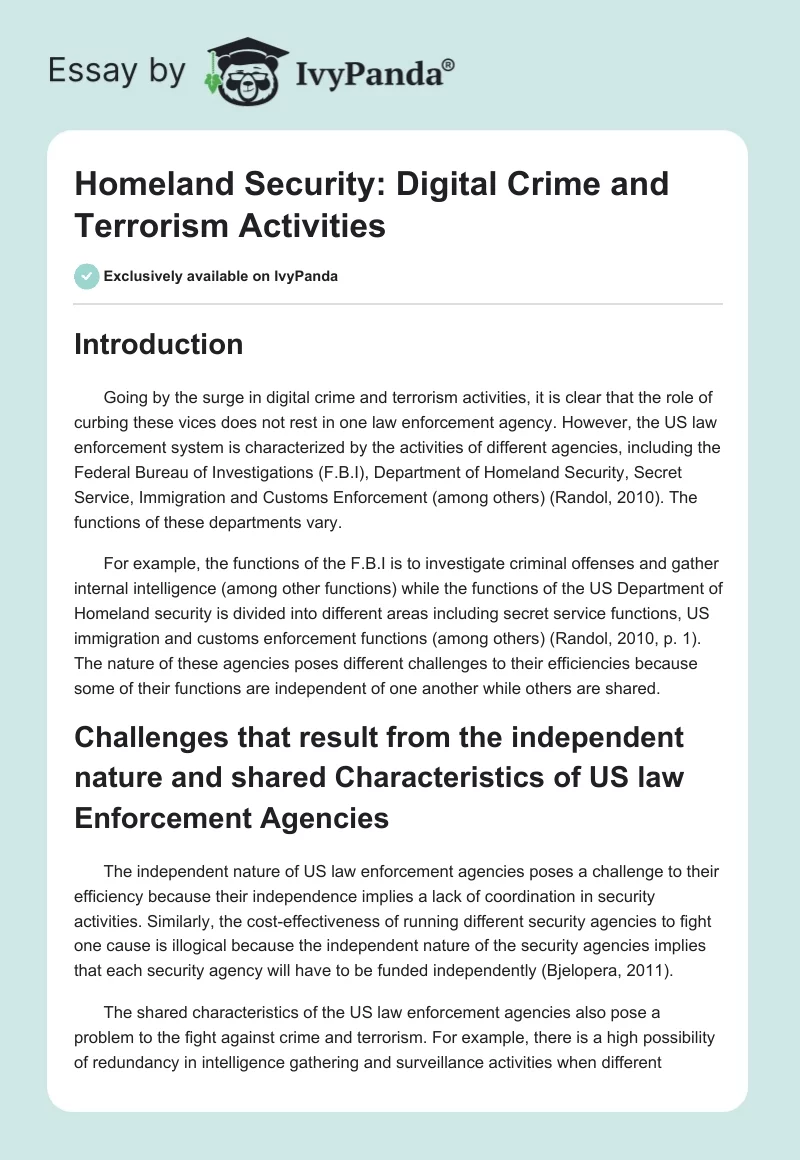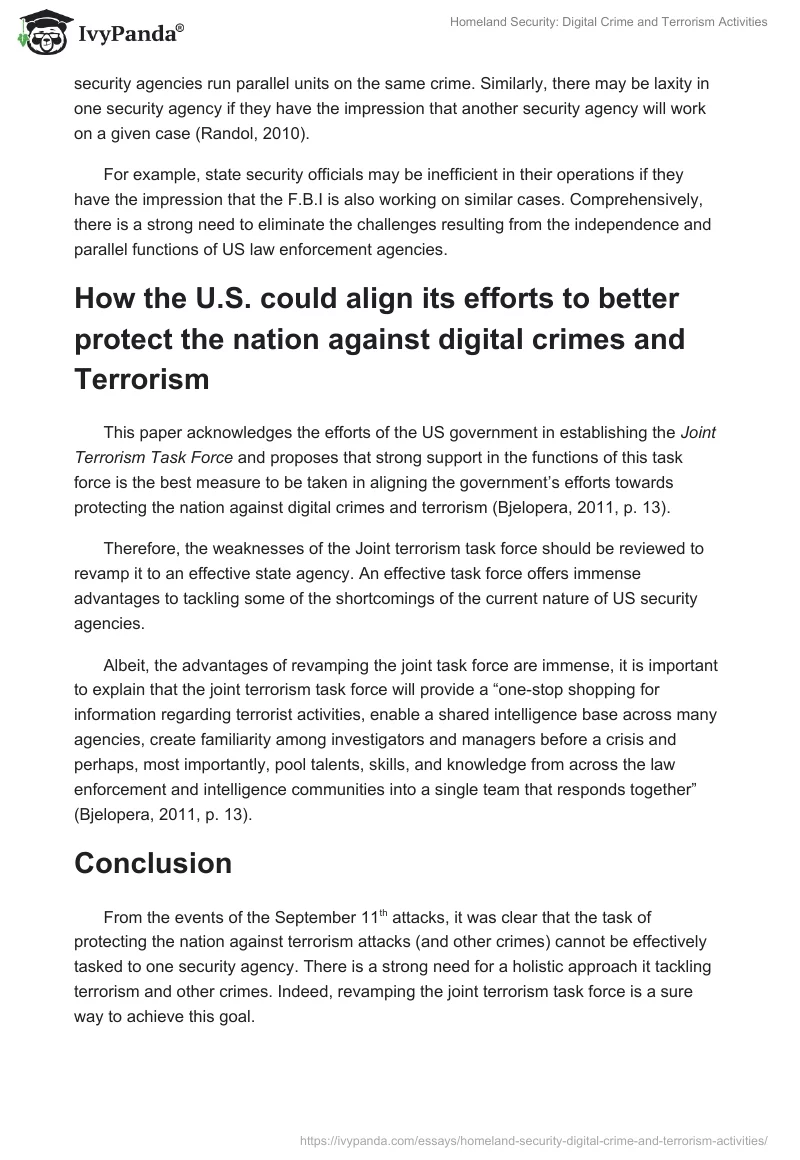Introduction
Going by the surge in digital crime and terrorism activities, it is clear that the role of curbing these vices does not rest in one law enforcement agency. However, the US law enforcement system is characterized by the activities of different agencies, including the Federal Bureau of Investigations (F.B.I), Department of Homeland Security, Secret Service, Immigration and Customs Enforcement (among others) (Randol, 2010). The functions of these departments vary.
For example, the functions of the F.B.I is to investigate criminal offenses and gather internal intelligence (among other functions) while the functions of the US Department of Homeland security is divided into different areas including secret service functions, US immigration and customs enforcement functions (among others) (Randol, 2010, p. 1). The nature of these agencies poses different challenges to their efficiencies because some of their functions are independent of one another while others are shared.
Challenges that result from the independent nature and shared Characteristics of US law Enforcement Agencies
The independent nature of US law enforcement agencies poses a challenge to their efficiency because their independence implies a lack of coordination in security activities. Similarly, the cost-effectiveness of running different security agencies to fight one cause is illogical because the independent nature of the security agencies implies that each security agency will have to be funded independently (Bjelopera, 2011).
The shared characteristics of the US law enforcement agencies also pose a problem to the fight against crime and terrorism. For example, there is a high possibility of redundancy in intelligence gathering and surveillance activities when different security agencies run parallel units on the same crime. Similarly, there may be laxity in one security agency if they have the impression that another security agency will work on a given case (Randol, 2010).
For example, state security officials may be inefficient in their operations if they have the impression that the F.B.I is also working on similar cases. Comprehensively, there is a strong need to eliminate the challenges resulting from the independence and parallel functions of US law enforcement agencies.
How the U.S. could align its efforts to better protect the nation against digital crimes and Terrorism
This paper acknowledges the efforts of the US government in establishing the Joint Terrorism Task Force and proposes that strong support in the functions of this task force is the best measure to be taken in aligning the government’s efforts towards protecting the nation against digital crimes and terrorism (Bjelopera, 2011, p. 13).
Therefore, the weaknesses of the Joint terrorism task force should be reviewed to revamp it to an effective state agency. An effective task force offers immense advantages to tackling some of the shortcomings of the current nature of US security agencies.
Albeit, the advantages of revamping the joint task force are immense, it is important to explain that the joint terrorism task force will provide a “one-stop shopping for information regarding terrorist activities, enable a shared intelligence base across many agencies, create familiarity among investigators and managers before a crisis and perhaps, most importantly, pool talents, skills, and knowledge from across the law enforcement and intelligence communities into a single team that responds together” (Bjelopera, 2011, p. 13).
Conclusion
From the events of the September 11th attacks, it was clear that the task of protecting the nation against terrorism attacks (and other crimes) cannot be effectively tasked to one security agency. There is a strong need for a holistic approach it tackling terrorism and other crimes. Indeed, revamping the joint terrorism task force is a sure way to achieve this goal.
References
Bjelopera, J. (2011). Federal Bureau of Investigation (FBI) and Terrorism Investigations. New York: DIANE Publishing.
Randol, M. (2010). Homeland Security Intelligence: Perceptions, Statutory Definitions, and Approaches. New York: DIANE Publishing.


